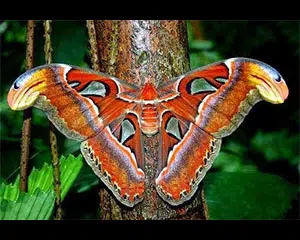 A moth is a nocturnal butterfly . It is a lepidopteran : an insect that develops a complete metamorphosis and has a sucking mouth and two pairs of wings.
A moth is a nocturnal butterfly . It is a lepidopteran : an insect that develops a complete metamorphosis and has a sucking mouth and two pairs of wings.
The moths have a yellowish head and grayish body, with a dark spot on the wings. They measure, as adults, approximately one centimeter long. Their larvae , meanwhile, build a cocoon and destroy the material where they nest, which can be paper, fabric or skin.
The so-called clothes moth , scientific name Tineola bisselliella , is characterized by damaging clothing items. This is because the larvae feed on keratin that is present in natural fibers from animals, such as wool.
By eating these fibers, moths can make holes in clothes stored in closets. It is important to keep in mind that, thanks to the darkness, the interior of this furniture is ideal for the growth of these animals .
To avoid the presence of clothing moths, it is essential to store the clothes once they are clean: if they have sweat stains or food remains, the probability of a moth attack increases. In addition, it is necessary to sweep the floor and clean drawers and shelves frequently to remove hair and threads that may have come loose.
It should be noted that, just as clothes moths prefer darkness, other types of moths always go towards light sources . This is because, being nocturnal, they evolved using the brightness of the moon as a guide or reference to fly. A lit lamp, in this way, causes confusion .
One of the most peculiar moths in the world is the Attacus atlas which is commonly known as the atlas moth or, incorrectly, the atlas butterfly . It is a species that can reach 30 centimeters from lateral end to end with its wings spread and 25 centimeters from the base of the wings to the tip of the antennas. Females exhibit greater size and physical strength than males, a case of sexual dimorphism that is easy to identify.
 When observing the wings of an atlas moth we can easily notice that it is decorated with a series of "windows"; However, far from being hollow, they are parts in which their fabric is translucent. Although their size is their most striking characteristic at first glance, given that moths and butterflies tend to be much smaller, there is perhaps an even more peculiar feature: they do not feed.
When observing the wings of an atlas moth we can easily notice that it is decorated with a series of "windows"; However, far from being hollow, they are parts in which their fabric is translucent. Although their size is their most striking characteristic at first glance, given that moths and butterflies tend to be much smaller, there is perhaps an even more peculiar feature: they do not feed.
The atlas moth cannot feed, although this does not mean that it does not have the necessary nutrients to sustain itself throughout its life: what happens is that its feeding takes place exclusively during its stage as a larva , and once it goes through metamorphosis. his mouth is completely sealed.
Its immense size can be intimidating to a person who does not know of its existence, since it exceeds that of any common bird, including a pigeon. Above all, it can scare us if we find it in its usual rest on tree trunks , and we cause it to fly away as soon as we get too close. Speaking specifically about its flight, due to its dimensions and weight it is not a species very suitable for rising and gliding skillfully through the air; On the contrary, it usually takes advantage of the currents to plan.
Various naturists agree that the function of the atlas moth is none other than to keep predators away from the larvae. Not only does its size inspire respect, but the design of its wings makes us think of two snake heads.
